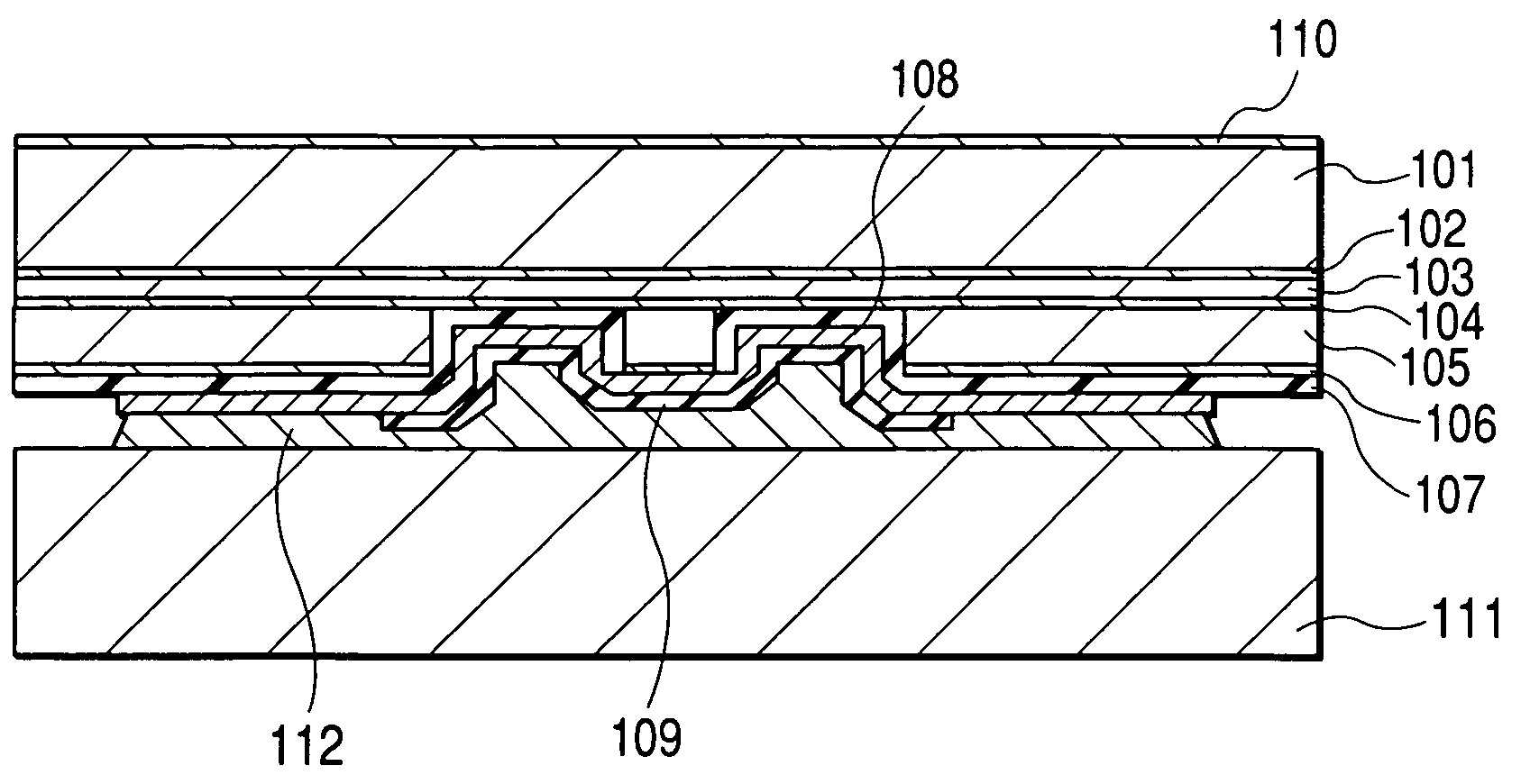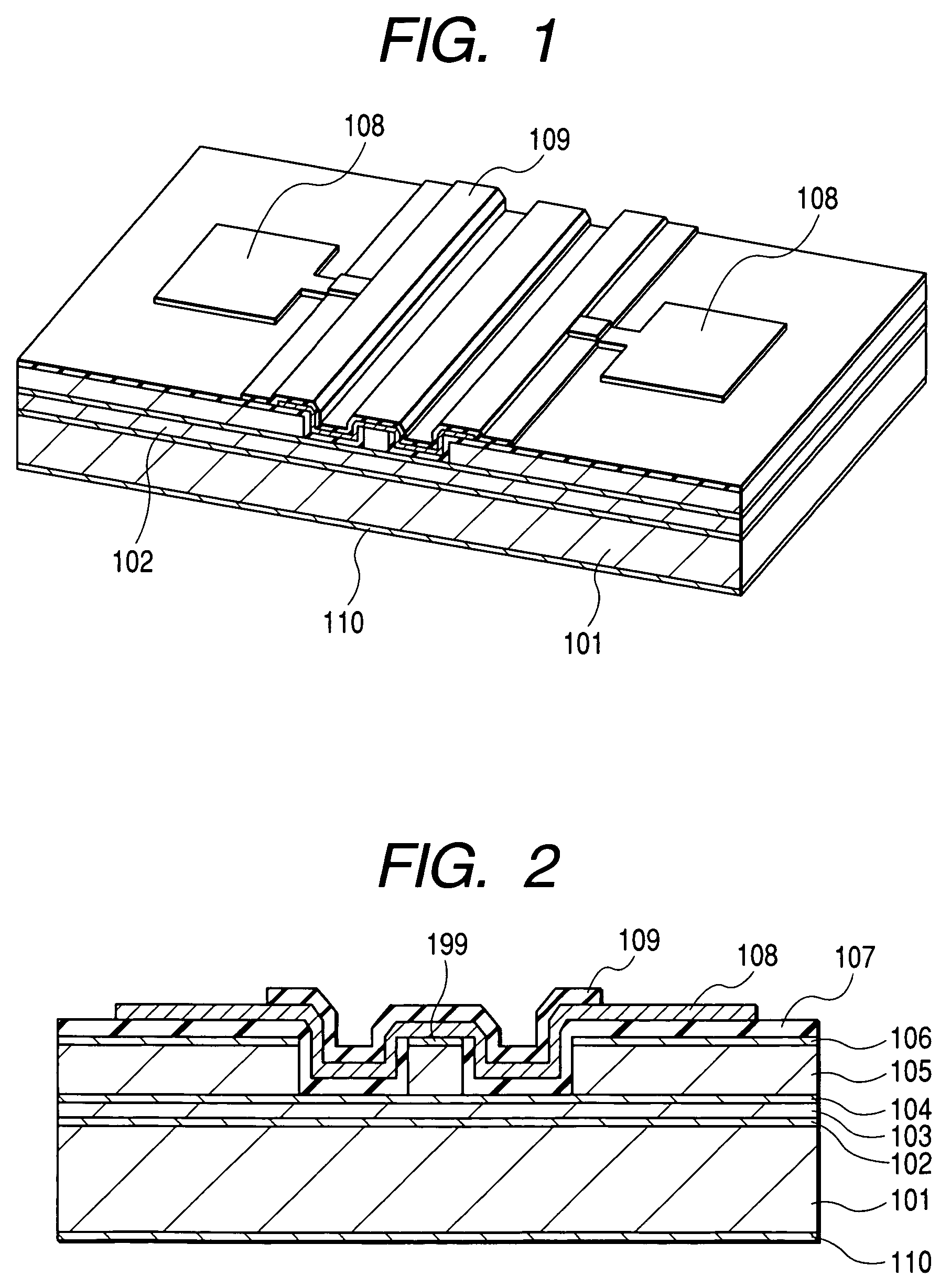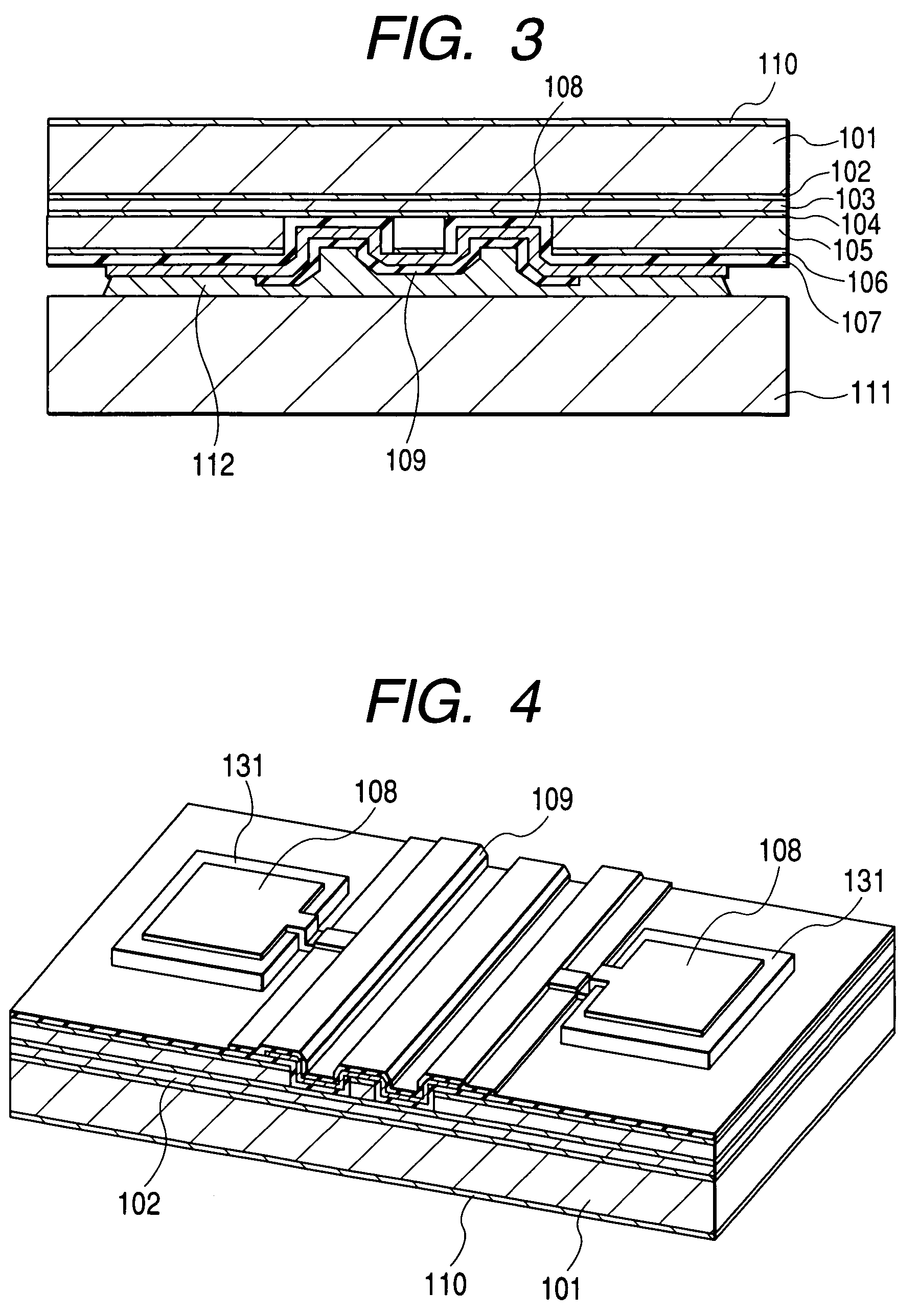Optoelectronic waveguiding device, structural body including the same, and optical module
a waveguide device and waveguide technology, applied in the direction of optical elements, instruments, semiconductor lasers, etc., can solve the problems of increasing the operating current, deteriorating the reliability of the device, increasing the stress, etc., and achieves the effect of suppressing the reaction, dissipating heat from an active region, and reducing the stress
- Summary
- Abstract
- Description
- Claims
- Application Information
AI Technical Summary
Benefits of technology
Problems solved by technology
Method used
Image
Examples
embodiment 1
[0030]The following will describe a ridge waveguide type Fabry-Perot (F-P) laser according to a first embodiment of the present invention. FIG. 1 is a perspective view of the first embodiment of the present invention and FIG. 2 is a sectional view of the optical waveguide. The device is a ridge waveguide type laser with an active layer made of InGaAsP-based material. On an n-type InP substrate 101 with a plane direction (100), an n-type InGaAsP optical confinement layer 102, a multi-quantum well layer 103 and a p-type InGaAsP optical confinement layer 104 are formed. Further, on the top of it, a p-type InP clad layer 105 and a p-type InGaAs ohmic contact layer 106 are stacked. The quantum well layer is formed as an active region by stacking seven pairs (periods) of a 6 nm-thick well layer and a 10 nm-thick barrier layer so as to set the oscillating wavelength to about 1300 nm. Although InGaAsP-based material is used as the material of the active region in this embodiment, InGaAlAs-b...
embodiment 2
[0040]The following describes a BH (Buried Heterostructure) type laser as a second embodiment of the present invention. FIGS. 7 and 8 are its perspective view and sectional view, respectively. The layered structure of the laser is the same as in the first embodiment. On an n-type InP substrate 201 with a plane direction (100), a InGaAsP-based active layer 202, a p type InP clad layer 203 and a p type ohmic contact layer 204 are stacked in this order. The active layer is composed of an InGaAsP optical confinement layer, a multi-quantum well layer and a p type InGaAsP optical confinement layer. The active layer is designed to set the oscillating wavelength to about 1300 nm. The oscillating wavelength must not be set to 1300 nm. The active layer may also be design to have a different oscillating wavelength as desired.
[0041]Using the wafer on which a desired layer structure is stacked, a BH type laser is fabricated by a known method. The active region is buried in Fe-added semi-insulati...
embodiment 3
[0044]FIGS. 10 and 11 show a VCSEL (Vertical Cavity Surface Emitting Laser) according to a third embodiment of the present invention. FIG. 11 is a sectional view of the vertical cavity surface emitting laser mounted on a mounting plate 301 via a solder metal 302. On an n-type GaAs substrate 311 with a plane direction (100), Bragg reflectors 312 and 313 and an active layer 314 are stacked. The structure consisting of the active region and Bragg reflectors is the same as a widely known structure and therefore not described here in detail. After the layered structure is formed, a current confinement structure, a surface dielectric film 315 and a p-side electrode 316 are formed. Further, the electrode is partially coated with a dielectric film 317 in order to prevent reaction with the solder metal of a mounting plate onto which the device is to be mounted. This coating of the electrode with the dielectric film 317 can prevent reaction between the electrode and the solder metal in the vi...
PUM
 Login to View More
Login to View More Abstract
Description
Claims
Application Information
 Login to View More
Login to View More - R&D
- Intellectual Property
- Life Sciences
- Materials
- Tech Scout
- Unparalleled Data Quality
- Higher Quality Content
- 60% Fewer Hallucinations
Browse by: Latest US Patents, China's latest patents, Technical Efficacy Thesaurus, Application Domain, Technology Topic, Popular Technical Reports.
© 2025 PatSnap. All rights reserved.Legal|Privacy policy|Modern Slavery Act Transparency Statement|Sitemap|About US| Contact US: help@patsnap.com



